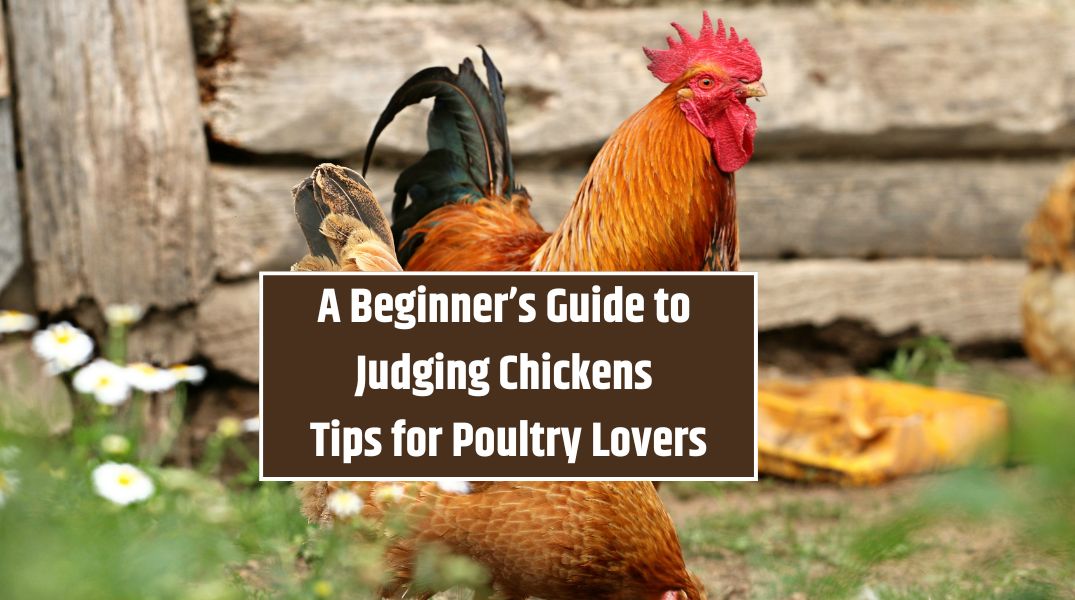Judging chickens is a fascinating skill that requires keen observation, attention to detail, and a solid understanding of poultry standards. Whether you’re a backyard chicken keeper or interested in participating in poultry shows, learning the basics of poultry judging can be a valuable skill. In this guide, we’ll cover the essential aspects of evaluating chickens, helping you take the first steps toward becoming a knowledgeable poultry judge.
If you’re passionate about poultry judging, consider joining your local 4-H or FFA chapters to gain hands-on experience. You may even work toward becoming a licensed judge through the American Poultry Association (APA).
Understanding Poultry Standards
Before judging chickens, it’s crucial to familiarize yourself with the breed standards outlined in the American Standard of Perfection. This guide, published by the APA, sets the ideal characteristics for chickens, ducks, turkeys, and geese.
What Poultry Standards Include:
- Physical attributes – Size, shape, and symmetry.
- Plumage and coloration – Feather texture, color patterns, and condition.
- Breed-specific traits – Unique characteristics based on the chicken’s breed.
Tip: You can purchase the latest edition of the American Standard of Perfection from the APA, or explore the 1910 edition for free online. Keep in mind that breed standards have evolved over time!
Evaluating Physical Attributes
1. Body Shape and Conformation
A well-formed chicken should exhibit proper proportions and symmetry. Look for balance in body shape, as any deviations may indicate faults in breeding.
2. Head and Facial Features
Inspect the comb, wattles, eyes, beak, and ears for:
Correct size and shape
Cleanliness
Proper alignment
3. Legs and Feet
- Strong, well-aligned legs are essential. Check for:
- Straight toes
- Even leg length
- No visible deformities
Assessing Plumage and Coloration
Feather quality plays a significant role in poultry judging. When examining plumage, consider:
- Feather condition – Smooth, glossy, and well-arranged feathers indicate good health.
- Color uniformity – Colors should be vibrant and consistent across the body.
- Breed-specific patterns – Each breed has unique feather characteristics that must be met.
Tip: A healthy, well-groomed chicken typically has bright, glossy feathers that are free from damage or irregular patches.
Checking Health and Overall Condition
A chicken’s health is a crucial factor in judging. A well-conditioned bird should display:
- Alertness – Active, responsive, and energetic behavior.
- Good posture – Standing tall with a strong, confident stance.
- Clear eyes and nostrils – No discharge or signs of infection.
- Clean beak and feet – Free from overgrowth or abnormalities.
Signs of Poor Health:
- Lethargy or weakness
- Visible injuries or deformities
- Ruffled or dull feathers
- Swollen wattles, eyes, or legs
Even if you’re not judging chickens for competition, keeping your flock healthy is essential for their well-being and preventing disease spread.
Considering Temperament and Behavior
While temperament is not always a primary judging criterion, it’s important in poultry handling.
Desirable Traits in Show Chickens:
Calm and docile – Easily handled without aggression.
Social and interactive – Comfortable around people.
Variations by Breed
Different breeds exhibit different behaviors. For example:
- Silkies and Cochins tend to be gentle and friendly.
- Leghorns and game breeds may be more active and independent.
Knowing the temperament expectations for each breed helps in making a fair evaluation.
Keeping Accurate Records and Giving Feedback
A good poultry judge maintains detailed notes on each bird evaluated. These records help in providing constructive feedback to breeders and exhibitors.
What to Document:
- Positive traits – Strengths that align with breed standards.
- Faults or deviations – Any issues that need improvement.
- Overall impressions – Summary of the bird’s quality.
Providing clear and professional feedback helps breeders refine their poultry and improve their breeding programs.
Judging chickens is both an art and a science, requiring knowledge, patience, and practice. By understanding poultry standards, evaluating physical attributes, assessing health, and maintaining accurate records, you can become a skilled poultry evaluator.
If you’re serious about poultry judging, immerse yourself in the world of chicken exhibitions and competitions. Join local 4-H or FFA programs, attend poultry shows, and study APA breed standards. With experience, you’ll develop the expertise needed to recognize exceptional birds and even pursue certification as an official poultry judge!
FAQ
1. What is poultry judging?
Poultry judging is the process of evaluating chickens and other poultry based on physical attributes, breed standards, plumage, health, and temperament. It’s a skill used in poultry shows and breeding programs.
2. Why are breed standards important in poultry judging?
Breed standards, like those in the American Standard of Perfection (APA), define the ideal size, shape, plumage, and other breed-specific traits. Judges use these guidelines to evaluate how well a chicken meets its breed’s ideal characteristics.
3. What physical traits are judged in chickens?
Key traits include:
- Body shape and symmetry: Balanced and well-proportioned.
- Head features: Proper size, alignment, and cleanliness of comb, wattles, beak, and eyes.
- Legs and feet: Straight toes, strong legs, and no deformities.
4. How is plumage evaluated in poultry judging?
Plumage is assessed for:
- Feather condition: Smooth, glossy, and damage-free feathers.
- Color uniformity: Vibrant and consistent coloration.
- Breed-specific patterns: Traits unique to the breed, such as lacing or barring.
5. What are signs of a healthy chicken in judging?
A healthy chicken should show:
- Alertness and energy.
- Good posture with a confident stance.
- Clear eyes and nostrils without discharge.
- Clean beak, feet, and feathers.











